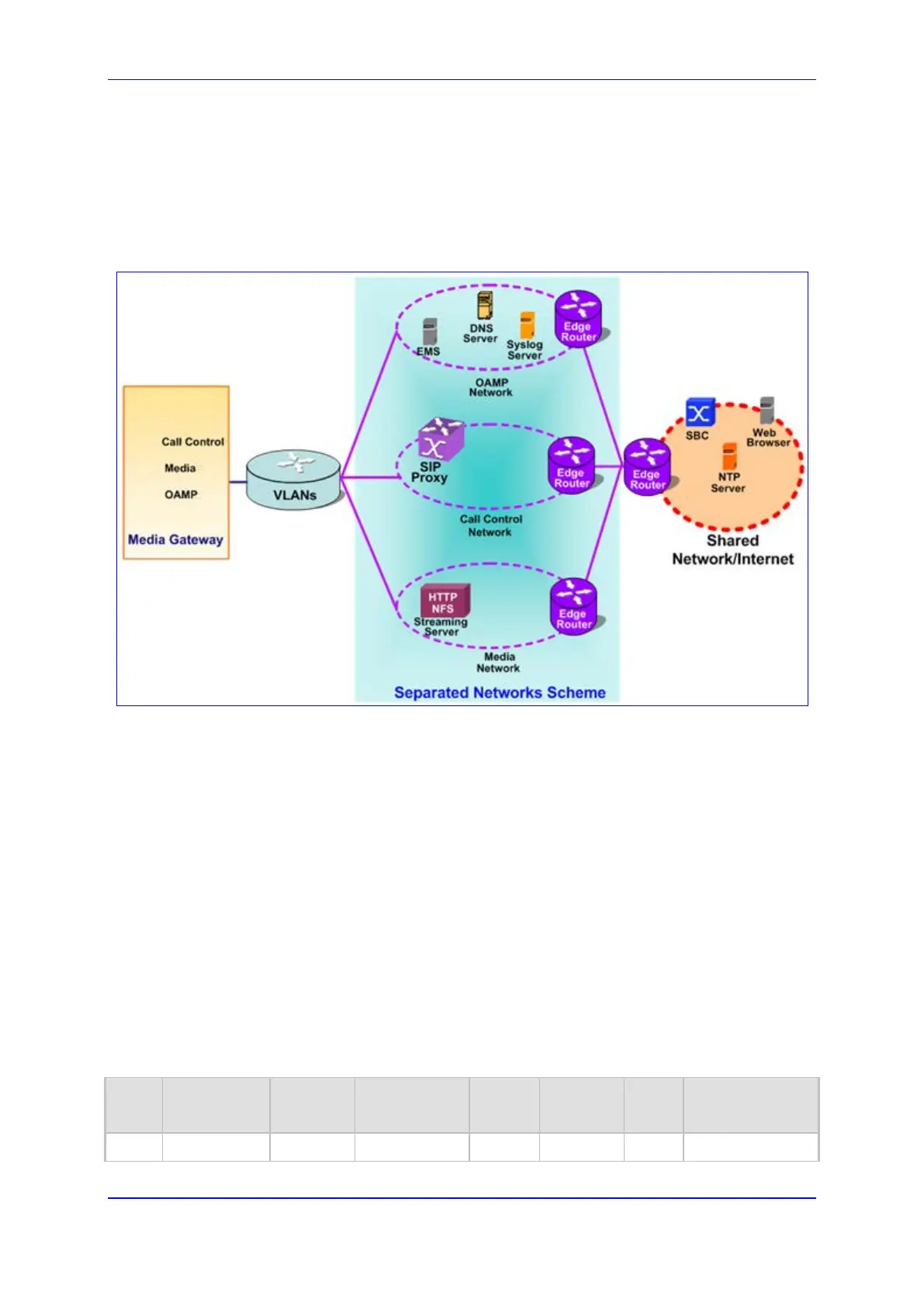Version 6.4 107 March 2012
SIP User's Manual 10. Network
10.3.1.1 Multiple Network Interfaces and VLANs
A need often arises to have logically separated network segments for various applications
(for administrative and security reasons). This can be achieved by employing Layer-2
VLANs and Layer-3 subnets.
Figure 10-3: Multiple Network Interfaces
The figure depicts a typical configuration featuring in which the device is configured with
three network interfaces for:
Operations, Administration, Maintenance, and Provisioning (OAMP) applications
Call Control applications
Media
It is connected to a VLAN-aware switch, which is used for directing traffic from (and to) the
device to three separated Layer-3 broadcast domains according to VLAN tags (middle
pane).
The Multiple Interfaces scheme allows the configuration of different IP addresses, each
associated with a unique VLAN ID. The configuration is performed using the Multiple
Interface table, which is configurable using the ini file, Web, and SNMP interfaces.
10.3.1.1.1 Overview of Multiple Interface Table
The Multiple Interfaces scheme allows you to define different IP addresses and VLANs in a
table format, as shown below:
Table 10-2: Multiple Interface Table
Index
Mode
Application Interface IP Address
Prefix
Length
Default
Gateway
VLAN
ID
Interface Name
0 OAMP IPv4 10.31.174.50 16 0.0.0.0 4 ManagementIF

